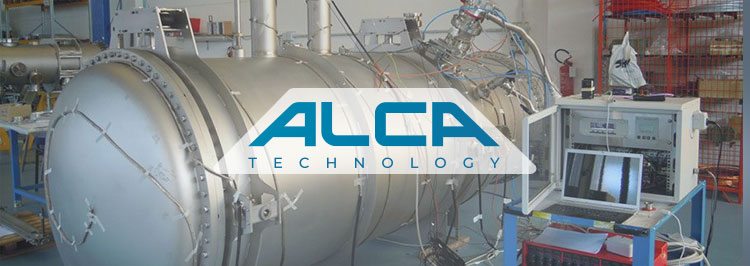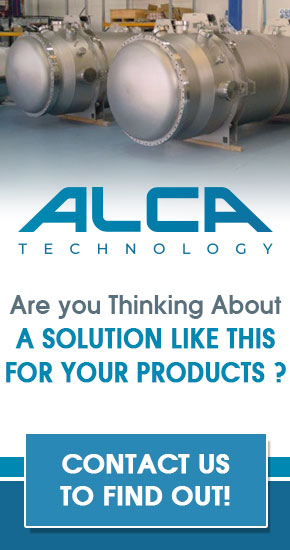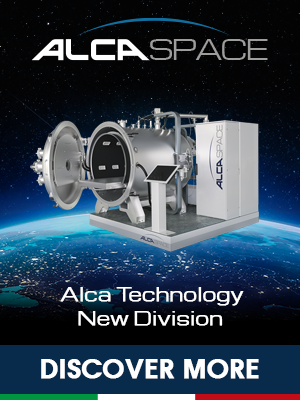High Vacuum Treatments: Which Materials?

The goal of this short tutorial is to define which materials are treatable by high vacuum deposition processes. This is an important issue for those approaching deposition processes for the first time, perhaps thinking of applying them to their products.
The feasibility analysis of a vacuum deposition process applied to a specific product has many aspects. For example: what is the objective from a technical point of view? Is the vacuum deposition process sustainable from a cost point of view? Is it possible to achieve the required productivity and, if so, with which type of system? Is it preferable to go to a coating center, or is it more convenient to consider bringing the process home?
Among all these questions, to which the company technical office, in collaboration with a partner specialized in vacuum deposition processes, is called to answer, there is a fundamental one that a company should ask itself initially: the object I want coat, can it actually be placed in a vacuum chamber and undergo a deposition process?
The answer to this question is rather complex, including in turn several questions: dimensions of the object, position of the surfaces to be coated, compatibility of the materials making up the object itself with the work environment and the processes used: we will focus our attention on the latter aspect.
A systematic approach to this problem can be set starting from a general classification of the materials that can be used for the realization of a product or a component that is part of a product. In a fairly general case, we can then distinguish such materials into metallic materials, ceramic materials and polymeric materials: let's analyze each of these categories separately.
Metallic materials
If the product/component to be coated is made up of a metallic material (pure metal or alloy), the situation tends to be favorable with respect to vacuum deposition processes. Generally, in fact, these materials have good compatibility with the UHV (Ultra High Vacuum) environment, presenting relatively low outgassing values -that is, release of volatile substances-. Naturally, the metal surfaces must be cleaned in advance, eliminating traces of contaminants - for example oils and greases - which could compromise the adhesion of the deposited film and create problems in achieving the basic vacuum and maintaining the working pressure. However, the cleaning techniques available on an industrial level are effective and consolidated, so the related technological risk is low. Furthermore, if the deposition of the thin film directly on the metal substrate is required, almost all metal materials must be treated in a vacuum chamber with preliminary processes (e.g. ionic sandblasting), to eliminate the surface oxide layer present.
From the point of view of the adhesion of the thin film, a metal substrate has potentially excellent characteristics, possessing a high surface energy -which is related to the adhesion force- and there being the possibility of heating the substrate to favor the restructuring of the deposited material without that this entails problems for the substrate itself, provided that it operates within a temperature range compatible with the characteristics of the alloy under consideration.
In addition, the high electrical conductivity of metal materials allows you to easily avoid the accumulation of electrostatic charges, facilitating the management of the deposition process.
In general, therefore, it can be said that metal substrates are excellent candidates for the deposition of thin films by almost all PVD (Phisical Vapor Deposition) and CVD (Chemical Vapor Deposition) processes, such as - for example - thermal evaporation, magnetron sputtering, cathodic arc deposition, MOCVD, ALD, etc.
Among the limitations to report, there are some significant ones. For example: items made using casting techniques (eg die casting) may have defects such as cracks and porosity which can cause degassing problems. Some metal alloys may have a superficial oxide layer whose removal could be too long and complex if required. It is also necessary to take into account the difference in the coefficient of thermal expansion of the substrate considered with respect to the deposited film, a possible cause of the onset of residual stresses, etc. Therefore, although the compatibility of a metal substrate with thin film deposition techniques is typically very good, each case must be analyzed separately.
Ceramic materials
Similarly to the case of metallic materials, ceramic materials also generally have excellent compatibility with vacuum deposition processes of thin films. In particular, the high melting temperature of these materials, their relatively high surface energy and the low level of degassing make them ideal materials for most PVD and CVD deposition processes.
Generally, ceramic materials can be heated to temperatures equal to 80-90% of their melting temperature without undergoing irreversible structural transformations and their surface can be mechanically or chemically cleaned quickly and effectively, guaranteeing - from this point of sight- high levels of adhesion of the deposited films.
Some types of ceramic materials are an exception to the above, mainly due to their structure, which can be characterized, for example, by a high level of porosity. In these cases, problems of excessive degassing could arise, which could make the process difficult or uneconomical.
Polymeric materials
They are materials that are often among the candidates for a vacuum deposition process, for example for applications in the packaging sector, for optical applications (lenses for eyeglasses, etc.), for aerospace applications, etc. Therefore, a compatibility assessment with the UHV environment or with the deposition processes considered is often required. From this point of view, several aspects must be considered:
- the maximum temperature to which the material can be subjected during the deposition process. It is known that a polymeric material significantly loses its mechanical properties above the so-called glass transition temperature. It is therefore necessary to operate below this temperature, which can lead to problems with regard to adhesion and the thin film deposited with the substrate and its cohesion. It should also be considered that, in some deposition processes, the surface temperature of the substrate can significantly increase due to the latent heat of condensation released by the material being deposited. This can potentially lead to deformation or even thermal degradation of the substrate itself.
- The surface energy of the polymeric material. The surface energy of a polymer is generally low, when compared with that of a metal or ceramic material. This makes it difficult to trigger the deposition processes by nucleation and growth uniformly on the surface itself: therefore a pre-treatment of the material is often required (e.g. corona treatment or with atmospheric plasma), called activation, with the aim of increasing the surface energy.
- A polymeric material may contain, in its formulation, also low molecular weight substances (e.g. plasticizers, UV absorbers, organic pigments, etc.) which can evaporate if placed in a UHV environment, contaminating the working chamber and modifying the properties physico-chemical of the substrate. This fact must be taken into account when it comes to checking the accounting of the material considered with a thin film deposition process.
- The surface roughness of the polymeric material considered must be compatible with the thickness of the film to be deposited, to avoid geometric discontinuities of the film itself. It should be noted that the surface roughness of a polymeric material can vary considerably as a result of the cleaning/activation treatments carried out, which must therefore be carefully defined.
For these (and other) reasons, the compatibility of a polymeric material with a deposition process of a thin film in a UHV environment is of problematic definition, often requiring a series of preliminary studies. This is also to fine-tune the process parameters and obtain the best possible results.
Of course, beyond the classification presented, there are also other types of materials that do not fall within those described. For example, some materials composed of several phases are of considerable interest as regards the deposition of thin films: an example is widia, composed of a cobalt matrix (metallic material) in which tungsten carbide particles (material ceramic), a material typically used for the production of cutting tools. In these cases, the compatibility analysis can certainly be carried out considering the characteristics of the individual phases, but - in general - it is prudent to also consider the possible interactions between the phases themselves.
Another category of materials that do not fall within the proposed classification are glasses. These are widely used materials as substrates in the deposition of thin films, both obviously because they are optically transparent materials, and for their excellent compatibility with the UHV environment and with practically all deposition techniques. This is due to the high temperature that they are able to tolerate, the low surface roughness value with which the glass can be produced, the ease with which a contamination-free surface can be obtained and the favorable surface energy value.
Conclusions
Analyzing the possibility of applying a thin film deposition treatment on the surface of a product is a complex analysis process. One of the first steps is to define the compatibility of the materials with which the product is made with the UHV environment and with the possible deposition processes. In this short tutorial, some general considerations have been reported that may allow you to set up an analysis based on a simple classification of materials.


